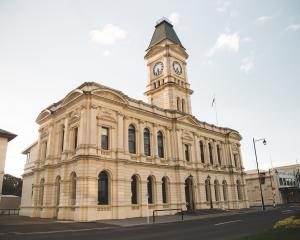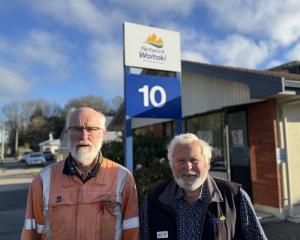Despite being hampered by a 20-tonne reduction in catch quotas this year, lobster fishermen in North Otago have been pulling up ''significantly'' more rock lobsters this year than in 2012, and could be set for five more bumper years, if a scientific study conducted in Moeraki continues to provide accurate forecasts of lobster populations.
This year government legislation lowered the Total Allowable Commercial Catch (TAC) quota in the Otago (CRA 7) fishery from 64 tonnes to 44 tonnes, but Otago Rock Lobster Industry Association executive officer Simon Gilmour said fishermen who began pulling up pots in June had seen ''an abundance'' of lobster.
''We have got more than half the catch in already and the expectation is that fishing will finish by the end of this month. That's a major change from the last three seasons when we didn't even manage to catch the TAC.
''If the catches continue the way they are going there is potential under the management rule that is based on the quantity of lobster that comes up across the number of pots that are being lifted, based on that the TAC is set and we expect a significant lift of over 70 tonnes next season.''
Mr Gilmour said based on a 10-year study of rock lobster puerulus larvae recruitment, conducted in Moeraki, a ''significant lift'' in lobster abundance had been expected.
Based on the Moeraki study there was ''a good chance'' that there would be another five years of ''good fishing'' ahead, he said.
Southern Shellfish Ltd fishery scientist Bob Street said monitoring of larval settlement in Moeraki had shown a four-year cyclic correlation between observed rock lobster larvae numbers and subsequent lobster catches.
''We can see clearly in Otago that there is the evidence there that it gives a precursor, either positive or negative, as to what is going to happen a few years down the track.''
Checks of puerulus larvae settlement monitoring devices at Moeraki Harbour had shown significant rises in the incidence of larvae since 2009, but checks last month had revealed ''particularly'' good numbers, he said.
''This recent improvement from 2009 to 2013 all bodes well for the fishery.''
Larval settlement monitoring would be expanded to include Otago Harbour next year, he added.
From October, the Otago fishery, which stretched from the Waitaki River to Slope Point below the Nugget, would become a 12-month fishery instead of a five-month fishery, and Mr Gilmour said that would bring further benefits to fishermen.
''It will bring the opportunity to target the peak prices in the export market which significantly change the periods in which fishermen go fishing, and we would hope to see a significant lift in returns to this fishery over the historical level.''
Catch quotas were based on the abundance of lobster, so quotas would not rise to accommodate a longer fishing period.












